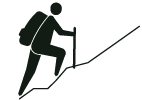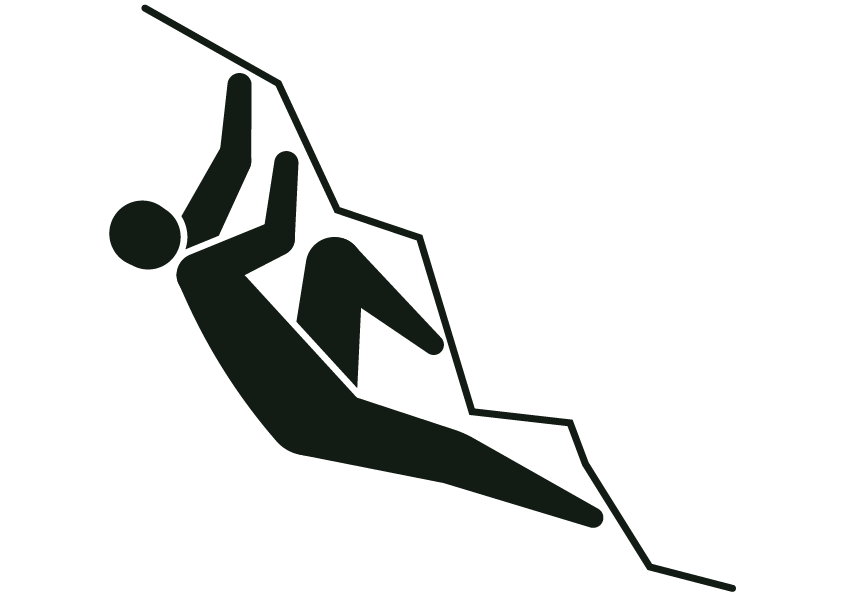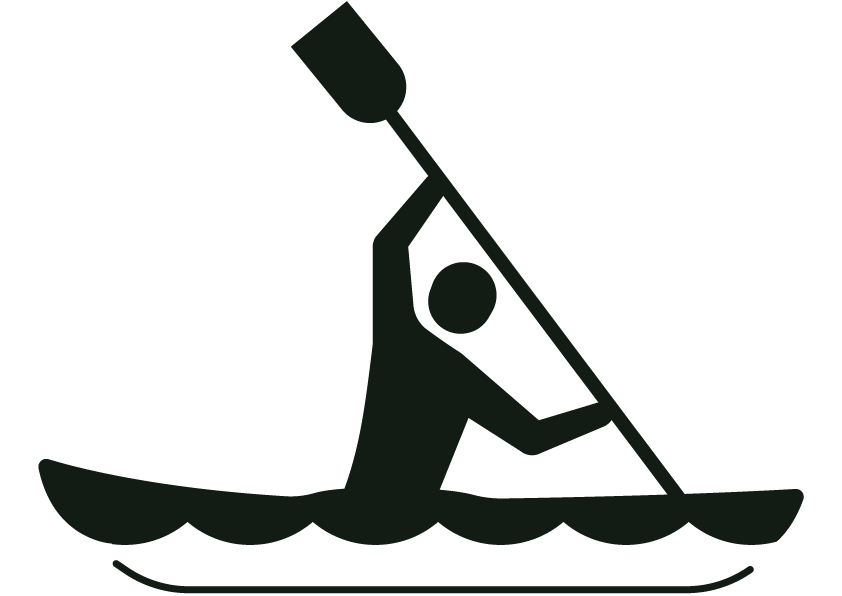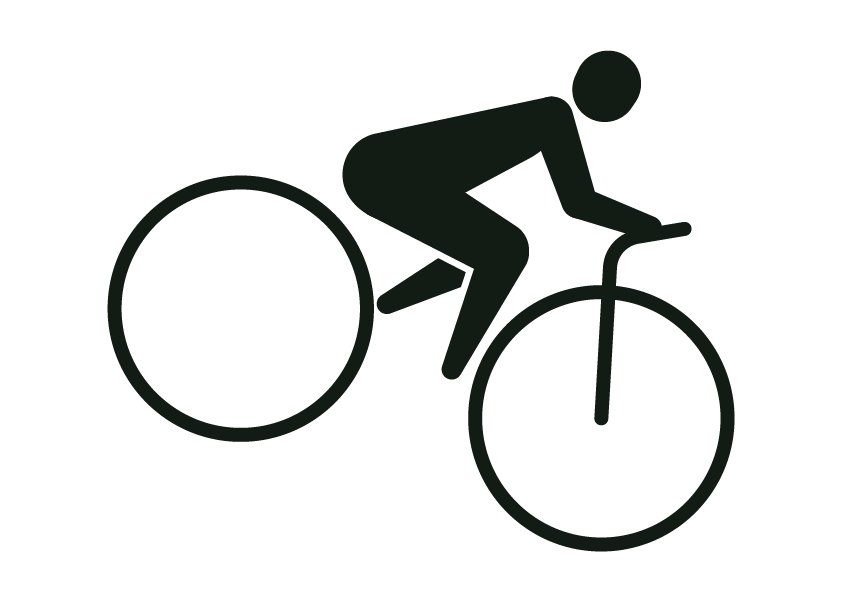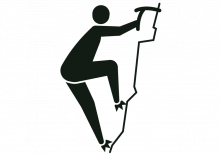Despite the name, the ANU Mountaineering Club is involved in a broad range of outdoor activities including bushwalking, snowshoeing, canyoning, climbing, mountain biking, kayaking, rogaining, cross country skiing and mountaineering. The club runs weekend trips as well as regular weekly events catering for a wide range of fitness and experience levels. The activities pages provide more details about the different activities. Trips can be viewed or submitted through the trip calendar page.
Bushwalking
Bushwalking involves exploring the great outdoors including bush, beaches, mountains, snow, grasslands, gorges, sand dunes, and more. It’s one of the most popular and accessible activities organized by club members and is one of the best ways for visitors to Australia to see the country. Sometimes bushwalking is about meeting the challenges of the outdoors, such as being cold, tired, wet, or hungry, but it is almost always enjoyable (or at least memorable!). Bushwalking can be tailored for all fitness levels, navigation ability and experience.
Club members often run trips ranging from part-day, full-day and multi-day trips. Walking distances may be long or short and involve a variety of terrain ranging from well maintained walking tracks to thick scrub.
Canberra has over thirty national parks and nature reserves within a few hours drive. Regular walks in include Namadgi, Kosciusko, Budawangs, Morton, Deua and Blue Mountains National Parks. Members also venture further afield to places like the Warrumbungles, Nadgee-Croajingalong, the Flinders Ranges, Tasmania and New Zealand. In summer, bushwalks are often in places where swimming is an option, or in the high country where it’s not so hot. In winter, they may be above the snow line with the aid of snowshoes, or they can take advantage of the cooler weather to explore hot, dry regions that are more pleasant in summer.
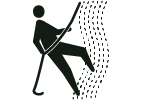
Canyoning
Canyoning is a highly popular activity which draws together the skills of bushwalking, rock climbing, mountaineering and even caving. Canyoners descend creeks, waterfalls, over boulders and swim or float past spectacular scenery.
Canyoning at any level can be challenging. They can be part day, full day or multi-day activities which may involve scrambling over wet and slimy boulders, abseiling down waterfalls and swimming in very cold water. What goes down must come up again ... eventually. Walking out of a canyon is part of the experience and often the most strenuous part of the trip.
Club members often run trips to canyons close to Canberra including Tuross, Bungonia and Macquarie Pass. Further afield, trips will often take in canyons in Blue Mountains, Kanangra and Wollemi.
The club typically runs canyon trips when daylight savings time is in place. Outside of this period, trips are limited by colder temperatures and shorter days. That said, there are a handful of dry canyons which are suitable to do in the winter.
Climbing
Rock climbing is about climbing cliffs. It takes many forms, from "bouldering", where you are climbing without a rope, but are close enough to the ground that if you fall, you'll be okay, to multi-day expeditions where you sleep part way up a large cliff. None of these styles are necessarily harder or easier than the others, but they differ in what makes them challenging. Climbing is above all else about challenging yourself while remaining safe.
The club runs a range of climbing trips, including many that are suitable for beginners. We often run day trips to many of Canberra's local crags such as Booroomba and Mt Coree. After work climbing is practical during longer summer daylight hours at Kambah rocks. Nowra or the Blue Mountains are popular destinations for the weekend. Some of Australia's best climbing sites such as Arapiles are about a day's drive away. We often have two or three 1-2 week trips to these sorts of places each year.
Climbing is usually done in pairs, with one person climbing on the end of a rope, while the other person "belays" by paying out and taking in rope. The nature of the sport makes it a very social activity. The hub of climbing in the club is our indoor climbing wall. The climbing wall is a great place to get to know people in the club and to discuss ideas for trips as well as to practice your climbing technique. Many people start out climbing at the indoor wall before progressing to outdoor beginner's trips and finally onto longer, more adventurous trips.
This section contains reference material for the equipment and techniques the club uses on climbing trips and at the climbing wall. Note that it is not enough to have just read these pages, you will also need to have practised the skills outdoors. Petzl Grigri belay devices are installed at the indoor climbing wall. These are anchored to the floor for extra safety. You will be instructed in their use during the belay course, but for extra advice see the Petzl page. Pay attention to the "bad technique" section. Belaying with a Grigri For outdoor trips there are more skills you must learn. On beginner trips your leader will instruct you in the necessary skills, but for other trips you will be expected to have mastered these skills already. If you are unsure about the skill requirement for the trip, you should ask your trip leader. The absolute basic skills required on any climbing trip are Partner safety check Voice Commands Tying in to the rope (use rethreaded figure-eight) Belaying with an ATC or Reverso Belaying with a Mega Jul Lowering Some more advanced skills for climbers wanting to be more independent Cleaning a top-rope anchor Lead belaying Leading (clipping quickdraws)
Kayaking
Kayaking is a great way to experience the Australian outdoors, whether by sedate exploration of lakes and estuaries, longer expeditions between coastal beaches, islands and inlets, or the adrenalin charge of white-water and surf kayaking. The ANUMC has a range of kayaks to suit all paddler types and skill levels.
It’s easy to get involved. Whether you're a seasoned paddler or completely new to the water, you must attend a "Come and Try" session on the lake. In these introductory sessions we will show the basics of how to use the boats, gear and how to paddle safely. Upon completion of a Come and Try session your membership card will be stamped, and then you can participate in the weekly kayaking sessions and trips further afar, depending on the experience requirements for the particular trip. Come and Try sessions are put up on the trip calendar, particularly at the start of the semester. They will be run throughout the year according to demand, so if there aren't any trips on the calendar then contact the kayaking officer.
Many members enjoy a relaxing paddle on Lake Burley Griffin at one of the weekly sessions. These, along with the regular social paddles on the lake, are the ideal time to develop skills and confidence before participating in weekend trips further afield. We generally paddle as a group, so come along to the weekly morning or evening session (or both!) to improve your technique and build up paddling fitness.
If you enjoy longer trips, the club's sea kayaks regularly cruise the beautiful NSW coastline and estuaries. For white-water paddlers, the Murrumbidgee River has some exciting rapids and a bit further afield, the Shoalhaven, Snowy, Deua, Goobarragandra and Kangaroo Rivers provide ample variety for all levels of paddling.
When the rivers are low, surfing some waves down the coast is great fun in a kayak, and the Penrith Olympic white water facility is a great venue for improving your white-water skills. The club also organizes informal training sessions for beginners, including eskimo rolling, sailing, and safety skills.
All paddling activities are posted on the club’s kayaking email list – so don’t just rely on the Trip Calendar because trips are often organised at short notice after rain.
Depending on the members of the club at any given time, canoepolo may be played on the lake within the club, or in connection with one of the local canoepolo clubs. Canoepolo is a great way to improve your all round kayaking skills and practice your techniques in a safe, fun environment, and all are welcome! It’s very informal and teams are arranged on the night.
Club members sometimes enter endurance events such as the Hawkesbury Classic or Murray Marathon, or multisport events such as the Upper Murray Challenge, which includes paddling, running and mountain biking legs. For club teams in these events, see competition funding on the funding page for more information on the subsidies that are available.
Skiing
In XC skiing the boot is connected to the skis at the toe which allows you to ski up hills as well as down. The freedom to ski away from chairlifts reduces costs and opens up vast areas to explore.
Advantages of XC skiing are:
- first timers who have never been to the snow are attracted by the fact that XC skiing the cheapest way to try skiing
- downhill skiers are attracted by the adrenalin of backcountry downhill which gets you away from the crowds at resorts and out to the fresh snow in the backcountry
- the amazing beauty and remoteness of Australia's alpine areas attracts “bushwalkers on skis” who want to go for a relaxing tour but have that downhill thrill you can't get with snow shoes
- resort telemarkers want the challenge of telemark skiing without leaving the convenience of the lifts (and luxuries like pubs) at the ski resorts
- the fitness and challenge of racing attracts competitive people to XC ski racing.
During the season the ANUMC runs trips covering all types of XC skiing trips: from challenging overnight trips to downhill night skiing under lights (or enjoying a beer by the fire while others night ski).
Mountain Biking
Most of us have a mountain bike of some form, possibly hiding away in the shed. One day, you finally get up the courage to join in on an ANUMC beginner’s mountain biking trip. And you’ll most probably be hooked… in a big way.
It’s easy to get addicted to this sport, especially when Canberra is THE place for mountain biking. Mountain bikers around the country and overseas are often excited when they hear you are from Canberra! They want to talk to you about all the sweet trails that we are lucky enough to have in our backyard. ANUMC trips go to a variety of places – in both Canberra and NSW. Most trips are a day or a weekend, however mountain bike touring is a popular option.
- Kowen Forest and Sparrow hill (past Queanbeyan) is a beginner’s mountain bike paradise – sweet smooth singletrack, and not too many hills
- Mount Stromlo offers a few more challenges, some world class facilities, and fun for all levels!
- Bruce Ridge means you can jump logs, rocks, and race down 'Pub Run' before class, after class, and during your lunch break – only 10 minutes by bike from ANU!
There are more and more trails being built around NSW.
- Bermagui and Tathra both have some fun trails and the club runs bike/beach combo weekend trips
- Jindabyne offers a range of flowy and technical trails, with views of the lake and snow-capped mountains – decent mountain bikes for hire at Bungurra Alpine Centre too
- Thredbo – for all you speed demons, Thredbo offers some of the best downhill runs around, as well as the hire of dual-suspension downhill bikes and all the protective gear you need to fly down the hill.
Mountaineering
The ANUMC has a distinguished history in the sport, and today offers many opportunities to learn about and participate in it. Mountaineering means, well, climbing mountains. Really it means climbing BIG mountains, and that means mountains with snow on them most of the year. In common with mountaineers in many parts of the world, Australian mountaineers don't have mountains like this on their doorstep, but what we do have is an abundance of opportunities (especially in the ANUMC) to participate in many of the activities that are part of mountaineering and build skills and experience.
Tough bushwalking, navigation, rock climbing, canyoning, ice climbing and ski touring all are in category. The extra, specialized skills needed for mountaineering are those involving crossing glaciers, moving and belaying on steep snow and ice, and anticipating and avoiding avalanches and rockfall. Climbing vertical ice isn't an essential part of most mountaineering, although the kind of extreme climbing that gets the headlines might make you think so!
The most accessible big mountains for us are just across the Tasman, and we are fortunate in having such fantastic mountains so close. Each year, groups of ANUMC mountaineers travel to climb in the Southern Alps. Participating in guided courses in NZ is the best way to learn those extra mountaineering skills and get a head start in mountaineering by spending a week in the company of a real expert. After that, the sky is the limit. Beyond NZ, ANUMC mountaineers have visited many of the greater ranges, and where you go and what you do there is limited only by your ambition and your wallet. The ANUMC has an Expedition Fund which may be able to provide start-up funds for that dream expedition to Antarctica, Greenland, or points between.

